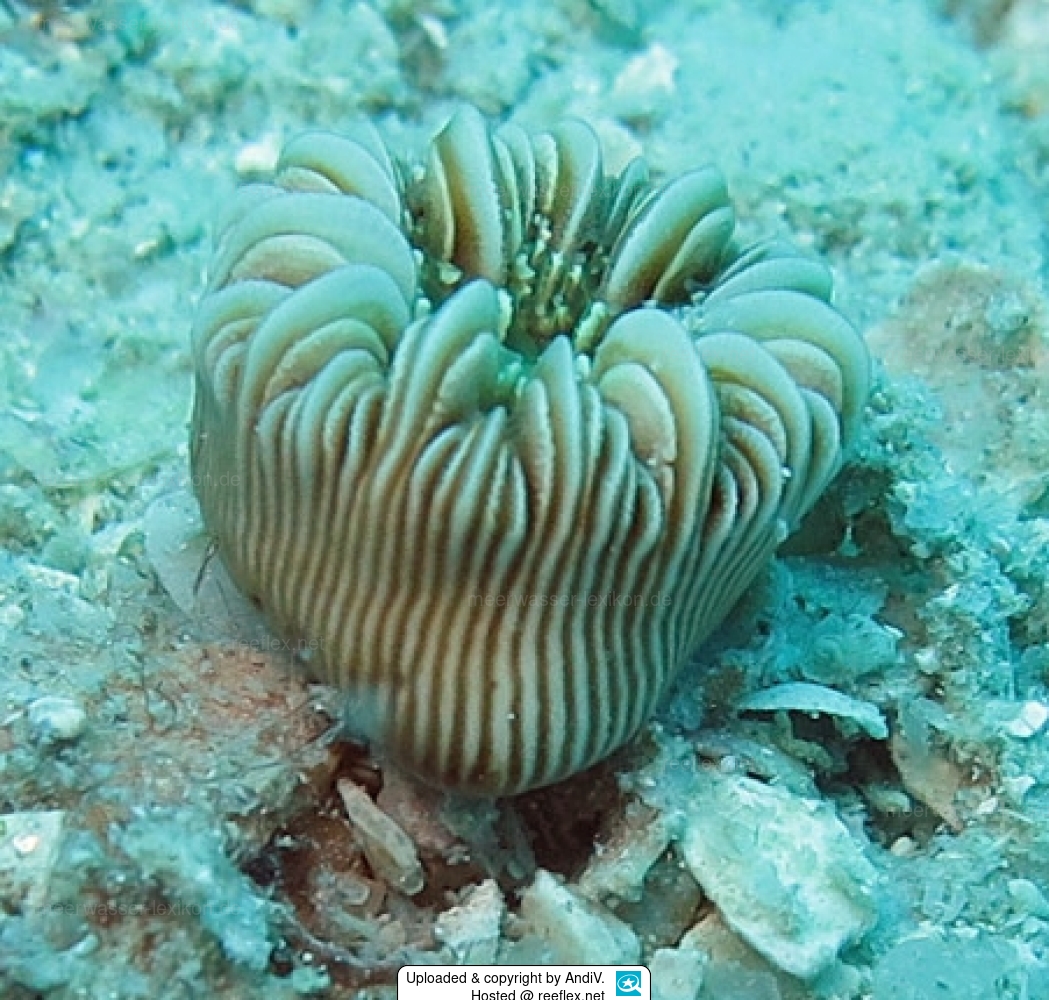Info
Milne-Edwards & Haime, 1848
Sometimes zooxanthellate. Corals are solitary, free-living, and have a flat base. They have a commensal relationship with a sipunculid worm (Aspidosiphon corallicola) which moves the coral about on soft substrates and prevents it from becoming buried. Tentacles are usually extended only at night. Larvae initially settle on a microgastropod shell which they usually envelop during subsequent growth. Corals have only one corallite which is circular. They have prominent costae.
Colour: Pale brown, often with a greenish oral disc.
Habitat: Always found on soft horizontal substrates at depths of 20 metres or more, usually in association with Heteropsammia cochlea and the fungiid Cycloseris cyclolites.
Abundance: May be locally abundant (commonly 40 individuals per square metre).
Text source: Corals of the world by Charlie Veron
Sometimes zooxanthellate. Corals are solitary, free-living, and have a flat base. They have a commensal relationship with a sipunculid worm (Aspidosiphon corallicola) which moves the coral about on soft substrates and prevents it from becoming buried. Tentacles are usually extended only at night. Larvae initially settle on a microgastropod shell which they usually envelop during subsequent growth. Corals have only one corallite which is circular. They have prominent costae.
Colour: Pale brown, often with a greenish oral disc.
Habitat: Always found on soft horizontal substrates at depths of 20 metres or more, usually in association with Heteropsammia cochlea and the fungiid Cycloseris cyclolites.
Abundance: May be locally abundant (commonly 40 individuals per square metre).
Text source: Corals of the world by Charlie Veron







 AndiV
AndiV








